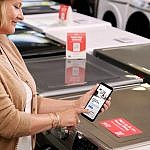From unintentionally acquired objects like shopping bags, takeout utensils, and junk mail, to bargain buys that don’t fit into our already over-full closets, to aspirational purchases that we hope will help us get our lives together and start living a Pinterest-worthy existence, clutter has a way of insinuating itself into our homes on a daily basis.
If not dealt with proactively, the constant influx of items can quickly blanket every available flat surface, creating an atmosphere of chaos that can easily translate into feelings of helplessness, apathy, and depression (and it’s not good for your budget, either).
The “Why” of Clutter
Most adults own garbage cans, recycling bins, and storage containers and know how to use them. The real issues behind clutter run deeper, often including:
- Lack of maintenance routines: Even if you have great management skills at work, the urge to decompress once you get home can lead to poor management of stuff. Having to add daily and weekly decluttering sessions to your calendar can seem like a drag.
- “Stock-up” syndrome: Both bargain shopping and holding onto items “just in case” can lead to overflowing storage areas. Most of us have a hard time passing up sales or letting go of items that we “might need” “someday.”
- Indecisiveness: A decluttering session can involve making decisions about dozens—or even hundreds—of items at a time, which can quickly grow exhausting.
- Guilt: From the artwork that your child lovingly finger-painted at daycare to the weird travel mugs that your aunt likes to give you every holiday season, it can be difficult to get rid of things that others have given to us. It can also be hard to let go of items that we’ve spent a lot of money on and not gotten a lot of use out of without feeling shame over the waste.
If your personal clutter situation has gotten out of control, it can be helpful to pinpoint the primary causes behind the build-up, do a room-by-room purge, and then put better habits and routines in place.
Need a Donation Pick-up? Get an Up-front Price.
Performing a Clutter Intervention: How to Purge Troublesome Items
Here are some common sources of clutter and how to deal with them:
ELECTRONICS & APPLIANCES
“E-Waste” is an ever-growing issue, as many households swap out everything from computers and televisions to phones and tablets at an ever-accelerating pace. According to the Electronics Takeback Coalition, Americans currently throw out about 400 million devices per year. Packaging and accessories only add to the waste. Here’s how to handle the process of replacing devices:
- Product packaging: For devices under $100 (or whatever price point feels comfortable to you), consider recycling product packaging as soon as you verify that your new gadget works as expects. For more expensive devices, keep packaging in a designated area until the warranty date has passed, marking the “toss date” in your calendar.
- Charging cables and earbuds: Set up a charging station or two in a convenient locations and then keep only as many charging cables as you need. Donate duplicates nonprofits or refurbishers. Ditto the cheap earbuds that come with many devices—keep a spare pair on hand and donate the rest.
- Old devices: First, wipe any hard drives clean using software such as Killdisk. Then, check with local libraries, schools, and nonprofit organizations to see what they might be able to use. If you can’t find a match there, move onto refurbishers—then check with your city to find local recycling options.
- Appliances: If your appliances aren’t in good enough shape to donate to Habitat for Humanity or a similar organization, check with your city to figure out the best way to recycle and/or get rid of them. Many cities have detailed information and systems in place for helping you get rid of major household items in the most ecologically responsible way possible.
SENTIMENTAL CLUTTER
When it comes to memorabilia, limit the amount of physical stuff you allow yourself to keep from year to year. Think about it—if you so much as fill a standard 12x12x16-inch moving box every year with stuff you just can’t bear to part with, you’ll need to add a good-sized closet to your life every 10-15 years just to keep up with the accumulation. Examples of sentimental clutter include:
- Old projects and awards: If you’re many years past junior high, you might consider getting rid of that rainforest diorama and the awards you won for it a the science fair.
- Kid art: Preschool- and elementary-school-aged kids create a lot of art. Some of it is precious, most is not.
- Baby clothes and toys: Kids grow really fast, and many caretakers are tempted to hang onto mementos from the days when they were teeny and cute.
- Greeting cards: Every year, most of us receive a substantial number of holiday and birthday greetings. It can be hard to toss anything containing personal photos and notes.
- Gifts: Along with cards, well-meaning friends and relatives often give us gifts when the occasion calls for it. Unfortunately, many of our loved ones don’t share our exact taste or know what we truly need or want.
- Souvenirs: Those “Viva, Las Vegas!” shot glasses seemed like a good idea at the time.
- Deceased relatives’ possessions: As if hoarding your own stuff out of guilt isn’t bad enough, when someone close to you passes away, it can be really hard to get rid of the stuff they’ve amassed through the years.
Here are the keys to organizing sentimental objects:
- Adopt a “no guilt” policy over donating unwanted gifts: If you can’t get friends and family to adhere to a “no gifts” policy, be ruthless in donating items you know you won’t use. Think of all the waste you’ll be creating if you don’t let these objects find their way to those who will truly want and use them.
- Digitize what you can: You can photograph mementos and organize them into albums, which are much less bulky and difficult to store than actual objects.
- Designate special containers for memorabilia: Each year, get a nice box or plastic bin, label it with the year, and place anything that you want to keep specifically for the memories into the box. If you run out of space, sort some objects out of the box.
- Don’t just sort once: Sometimes things are fun and/or meaningful to have around for awhile, and then, after a few years, they become less special. Every year, review the items you’ve saved from previous years. Did you enjoy looking at each and every one of these items? Is there anything that can go?
- Think long-term: Is your current organizational strategy going to work for the next 20-40 years without necessitating moving into a 10,000-square-foot dwelling that your children will have to excavate after you pass on? If not, rethink sooner than later.
“JUST-IN-CASE” CLUTTER
Of all of the types of clutter hanging around our homes, this type can be the source of the most anxiety. What if you find the other half of that pair of socks, or need a dozen plastic yogurt containers immediately after getting rid of your stash of stray items? Well…what if you do? Eliminating the following types of clutter may cause you to purchase the occasional replacement, but you’ll live a much more peaceful existence in the meantime:
- Old clothes: Save one outfit for dirty work like yard clean up and painting projects. One. Get rid of the rest of the outdated, stained, and or ill-fitting clothing clogging up your closets and drawers.
- Mismatched items: Socks, earrings, tupperware—items that consist of more than one piece frequently lose their mates. After conducting a reasonably exhaustive search, and potentially saving the pieces missing mates in a designated location for a month or two, toss them out.
- Broken/dull tools and utensils: The cheap, dull knife with the melted plastic handle? You don’t need to save that.
- Empty containers: From condiment jars and plastic tubs to organizers that aren’t currently in use, these can take up quite a bit of space. Recycle or donate any receptacles that don’t find a use within three months of taking up residence in your home.
- Unidentifiable hardware: Random screws, washers, keys, and the like are staples of junk drawers everywhere.
- Sticky, scratched sunglasses: Along with half-used tubes of lip balm, fuzzy hair ties, and other stray personal items that have passed their prime, you can let these go.
- Half-dead pens and pencils: Only keep as many writing utensils around as you can use up within a year. When weeding down you collection, start throwing out the items that are in the worst condition first.
- Junk mail, flyers, and coupons: Evaluate offers as soon as they arrive and only keep the ones you’re 99 percent certain you’ll actually use. Catalogs can be tossed immediately—you don’t need to browse them for more items to clutter your home with.
KNOWLEDGE, RECORD-KEEPING & HOBBY CLUTTER
Home offices and libraries can easily start to overflow with materials you’re sure you need or want to reference again “someday.” Here’s how to deal with common culprits:
- Books: Sort through your book collection at least once a year and weed out anything that’s outdated or that you’re unlikely to read again. When purchasing new books, make it a policy to buy digital copies of those that you know aren’t likely to be special enough to warrant shelf space—or take advantage of your local library!
- Magazines and newspapers: If you’re still subscribing to print editions of periodicals, make it a matter of routine to recycle old copies at regular intervals. You can likely look up anything you need to reference again online.
- Receipts and billing statements: Believe it or not, you don’t generally need to keep receipts and billing statements around indefinitely. Keep receipts for as long as you think you might need to return an item, or for five years if you’re claiming something as a tax expense. Billing statements can be discarded as soon as you confirm that your account balance reflects your latest payment.
- Product warranties and manuals: Keep a special file for these and go through it every year to cull anything that you no longer need.
- Hobby equipment and craft supplies: If you have a current stash, be honest with yourself about what you will and won’t use going forward, and sell or donate unwanted items. When starting a new hobby, go slowly. Try to buy supplies only for projects you have intentions of starting immediately, and resist the urge to build up large stashes of materials. Instead, get creative and see what you can do with limited options.
Need a Donation Pick-up? Get an Up-front Price.
Conclusion: Keeping Clutter Under Control
Even when you know how to keep a handle on clutter, it can be difficult to manage it on a day-in, day-out basis. Here are some tricks for keeping clutter under control:
CLUTTER TESTS
- The “Will I Use This Today?” Test: When you’re struck with the overwhelming impulse to purchase something new or to hold onto an item that hasn’t seen the light of day, let alone actual use, in months, ask yourself, “Will I use this today?” If you’re buying a flat of refried beans from Costco, do you plan to make burritos tonight? If you’re trying on an item of clothing, do you wish you could wear it out of the store? If you’re holding onto an old gadget, will you use it today instead of it’s newer counterpart? If not today, then when? For new purchases, if the answer is “someday,” buy the item “someday.” For current possessions, err on the side of purging.
- The “Can I Rent or Borrow This?” Test: It’s common knowledge that books and movies can be easily borrowed or rented, but when starting a new hobby or learning a new skill, many people make the mistake of buying a lot of expensive equipment when they could easily rent or borrow it. Want to learn photography? Many services rent out a full range of equipment by the day, week, or month. Want to go skiing or boating, but suspect you won’t do so more than twice a year? Renting is your BFF. Whether you’re considering throwing something out or purchasing something new, this can be a good solution.
- The “Can I Easily Replace This?” Test: If you can easily replace an item with a few dollars and a quick errand or a speedy internet delivery, use the “when in doubt, throw it out” rule without guilt.
DECLUTTERING HABITS
- Unsubscribe: Take a hard look at all sources of recurring clutter, and try to eliminate as many as you can. Get on a “Do Not Mail” list to unsubscribe from junk mail. Convince your friends and family to go “no gifts,” or to only gift consumables and experiences. For newspapers and magazines, give up print subscriptions and go digital. If hanging out on Pinterest and Instagram causes you to want to buy stuff, spend less time on these channels.
- Declutter daily: Regularly dealing with clutter is a much more effective strategy than “marathoning.” Set reminder on your daily calendar, then set a timer for 20 minutes and use the time to clear flat surfaces, sort incoming items, and return stray possessions to their homes.
- Make donating a routine practice: Set up a designated donation bin so that you always have an immediate place to put items you want to give away. Then put a monthly Goodwill run on your calendar, or schedule a regular donation pickup.
With these techniques in place, you’ll find yourself automatically reducing clutter and creating a peaceful, inviting home. Once you feel on top of things, you’ll be inspired to stay that way.
Need a Donation Pick-up? Get an Up-front Price.
Dolly helps you move on your schedule and at an affordable price. Book now and see the difference: https://dolly.com.






